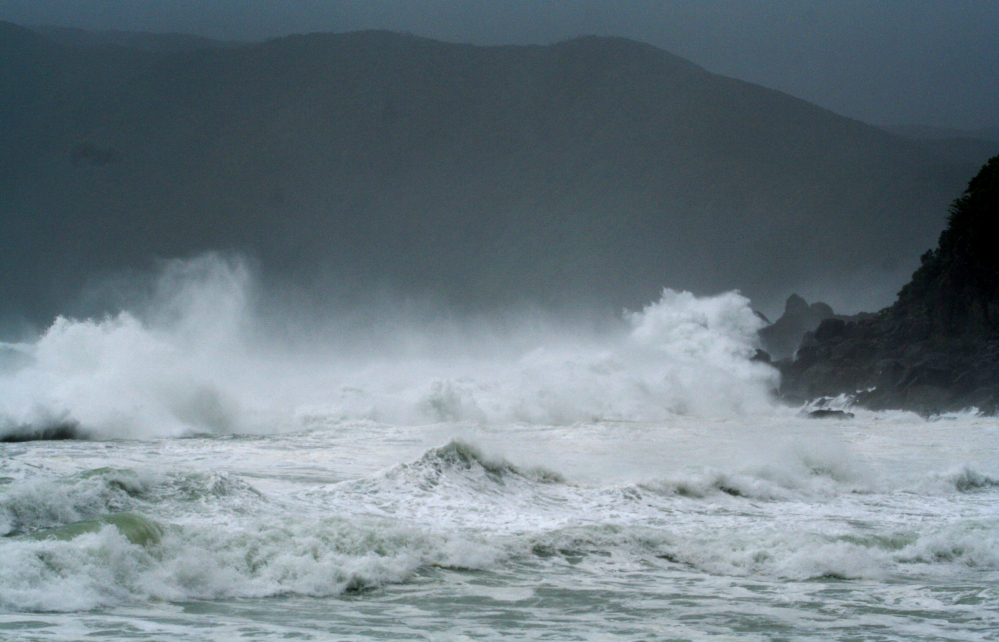TOKYO — A powerful typhoon pummeled the southern Japanese islands of Okinawa on Tuesday, paralyzing transport and prompting U.S. forces based there to cancel all outdoor activity.
The Okinawan government said 10 people were injured, one seriously. Separately, a man was reported missing from a fishing boat in rough seas off Kyushu island, to the north.
One of the strongest and biggest typhoons to hit during Japan’s summer months, Typhoon Neoguri was packing sustained winds of 120 mph and gusts up to 148 mph, the Japan Meteorological Agency said.
“Please refrain from nonessential activities and from approaching hazardous areas,” said Meteorological Agency official Satoshi Ebihara. “Please show extreme caution.”
Local airports were closed and about 593,000 people were advised to evacuate their homes, though most remained put, taking refuge from the destructive winds, waves up to 46 feet high and storm surges that were set to intensify as the storm passed the main island of Okinawa in the evening.
More than half of the 50,000 U.S. troops in Japan are based in Okinawa, the location of several bases, including Kadena, the biggest U.S. air base in Asia. An advisory on its website said the storm was at a level for which all outdoor activity was prohibited.
Television footage showed a building shattered, damaged storefronts and trees toppled as winds picked up in the Okinawan capital of Naha.
Since typhoons track along Japan’s coasts, often veering onshore every summer, the country is relatively well prepared. Much greater damage is likely from torrential rains if the typhoon hits land as expected on Thursday or Friday and moves across the Japanese archipelago.
The storm was moving slowly and diminishing in intensity, but its wide area and slow movement could add to the potential damage, weather forecasters said.
Authorities in China and Taiwan also warned ships to stay clear of the storm.
Forecasts show the storm tracking toward Kyushu and then across Japan’s main island of Honshu. It is forecast to lose more of its power over land, but much of the damage from such storms comes from downpours that cause landslides and flooding. Such risks are elevated by the storm’s timing, on the tail end of Japan’s summer rainy season.
The Philippines, which suffered the strongest typhoon to ever hit land when Haiyan struck in November, was spared the ferocious winds of Neoguri. The storm did not make landfall and was closest to the country Monday when it was about 480 kilometers (300 miles) east of the northernmost province of Batanes before it started to blow away toward southern Japan.
The typhoon did intensify the Philippines’ southwest monsoon, dumping heavy rains on some western provinces without causing any major damage.
Neoguri is a Korean word meaning “raccoon dog,” a knee-high animal that looks like a cross between a dog and a raccoon but is a separate species common in East Asia.
Send questions/comments to the editors.



Success. Please wait for the page to reload. If the page does not reload within 5 seconds, please refresh the page.
Enter your email and password to access comments.
Hi, to comment on stories you must . This profile is in addition to your subscription and website login.
Already have a commenting profile? .
Invalid username/password.
Please check your email to confirm and complete your registration.
Only subscribers are eligible to post comments. Please subscribe or login first for digital access. Here’s why.
Use the form below to reset your password. When you've submitted your account email, we will send an email with a reset code.